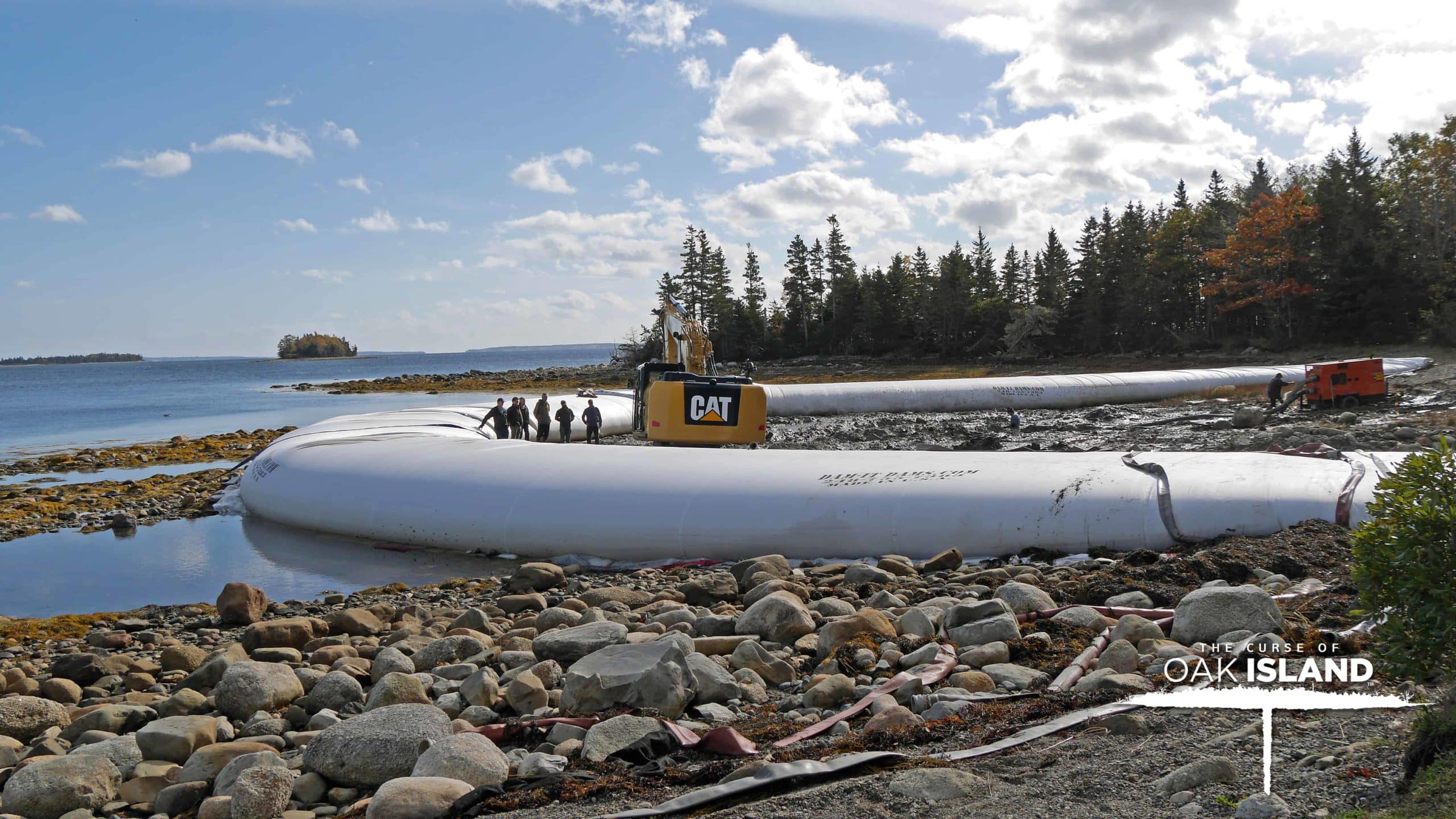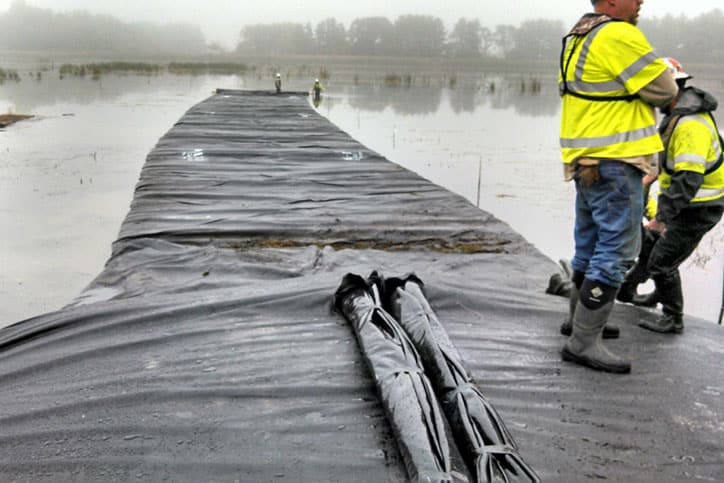Among other obstacles faced in the construction process, water can be one of the most challenging and costly barriers during construction. With 71% of the earth’s surface covered in water, and new construction beginning every day, cofferdams are proving to be just as significant today as they were before the birth of Christ.
What is a Cofferdam?
A cofferdam is an enclosure built within a body of water to allow the enclosed area to be pumped out. This pumping creates a dry working environment so the work can be carried out safely. Cofferdams are commonly used to construct or repair permanent dams, oil platforms, bridge piers, etc., built within the water.
Cofferdam Uses
There are various construction scenarios where a cofferdam is necessary, such as building a structure in a body of water, building in an area of coarse/grained soil (where deep excavations are required), building below the groundwater table, building when trenches would likely collapse (typically during deep excavations), to protect adjoining buildings or nearby structures, and to remove a sunken vessel, to name a few.
Advantages of Cofferdam Usage
Some advantages of using a cofferdam include permitted excavation and construction of structures in an otherwise poor environment, the provision of a safe environment to work, contractors typically have design responsibility, piles are easily added and removed, and the materials can typically be reused for other projects.
Types of cofferdams
Different types of cofferdams are classified based on sizes, configurations, and material options. Cofferdams usually fall into one of several categories:
- Cantilever sheet pile: Cantilever sheet piles are long, narrow timbers driven into the ground and then “piled” one on top of another like giant wooden toothpicks. These long, slender piles are driven deep into the ground and are connected with metal ties. The entire structure is then covered with a waterproof membrane.
- Cellular: Cellular cofferdams are usually constructed in a square or rectangular shape and are made up of a series of individual cells or compartments held in position by a framework of steel or other structural members.
- Braced: A braced cofferdam is typically made of wood and is braced with wooden timbers. It is designed to be removed after the construction project is completed.
- Water-Filled/Inflatable: A water-inflated dam is a water-filled, inflatable tube designed to be used as a barrier. They are ideal for diverse applications because they are solid and can be made in an almost unlimited number of shapes and sizes.
- Earthen: An earthen cofferdam is a temporary structure used to keep water out of a trench excavated for a foundation or similar construction project. Earthen dams are constructed of earth and timber and are designed to be removed after the work is completed. The top of the dam is usually open so that any water that does get through will drain away.
- Rockfill consists of a wooden frame with an inflatable rubber membrane stretched across it. The structure is built around a few steel pipes called “rock piles.” These rock piles are driven deep into the ground and connected with metal connectors. The membrane can expand and contract with changes in the water level. Rockfill dams are typically used when an extensive excavation is needed.
- Single-walled: A single-walled cofferdam is a temporary structure used to hold back the earth while constructing an underground or underwater cavity goes forward. The single-walled cofferdam is made of a flexible material such as rubberized fabric secured to a wood or metal framework.
- Double-walled: A double-walled cofferdam is a temporary structure that keeps the surrounding area dry while you pour the concrete into the forms. A double-walled cofferdam is usually made of plywood or OSB. It’s constructed with two layers of material that are held together by metal or wooden screws. The screws are spaced so that there are no gaps or holes in the perimeter. This keeps water out.
Selection of the Proper Cofferdam
Cofferdam types are selected based on the following factors: the area to be protected by a cofferdam,
depth of water to be dealt with, the overtopping possibility by flood tides, characteristics of a bed on which the cofferdam is constructed, the velocity of flowing water, the chance of scour due to the reduction of waterway caused by the construction of the cofferdam, the availability of construction materials in the vicinity of the site of work, and the available transportation facilities.
To learn more about inflatable cofferdams and their usefulness in dewatering, you need to contact our team at Dam-It-Dams. Contact us by phone at (810) 695-1693 or online using our contact form.


